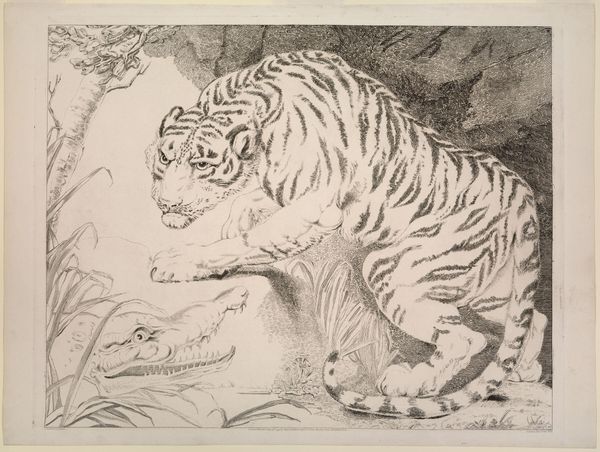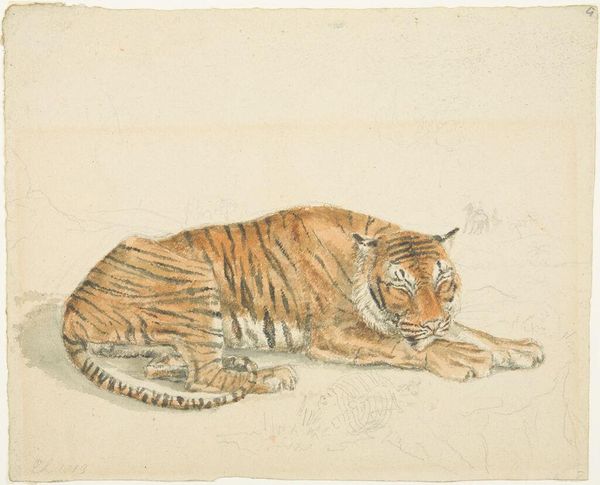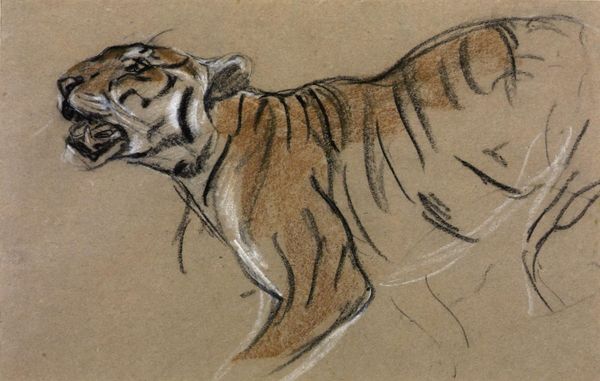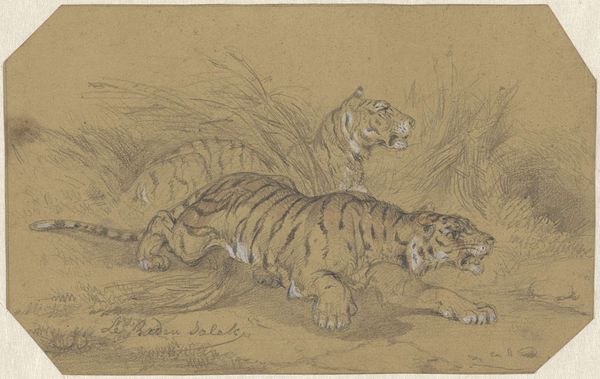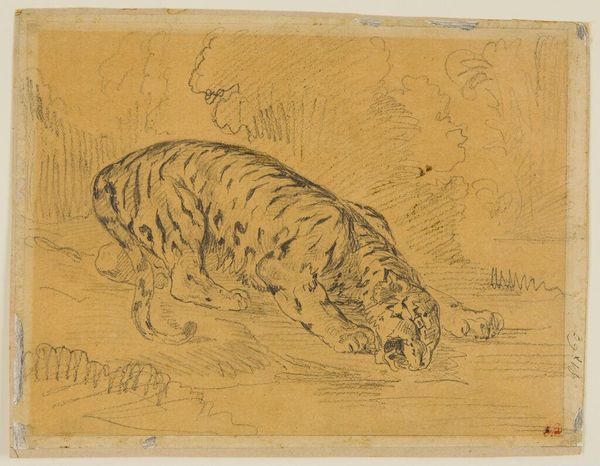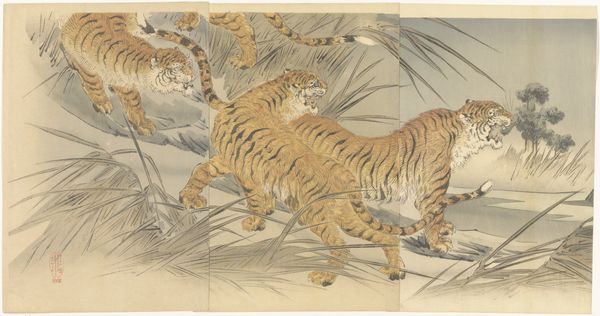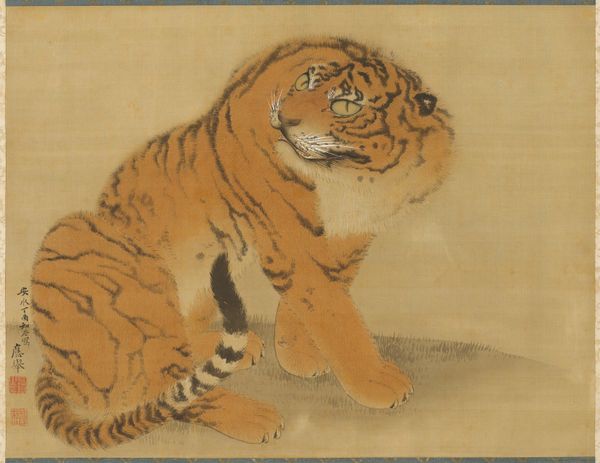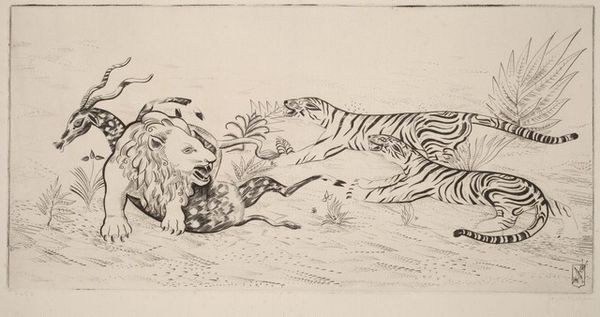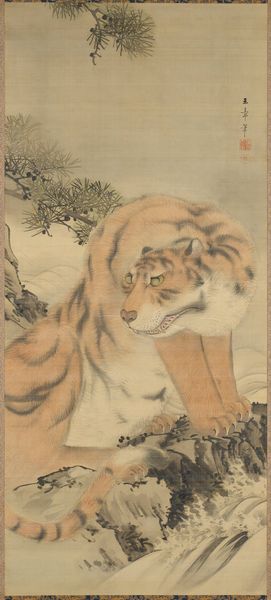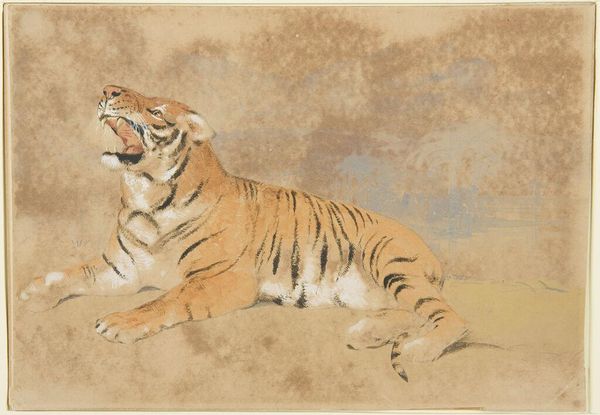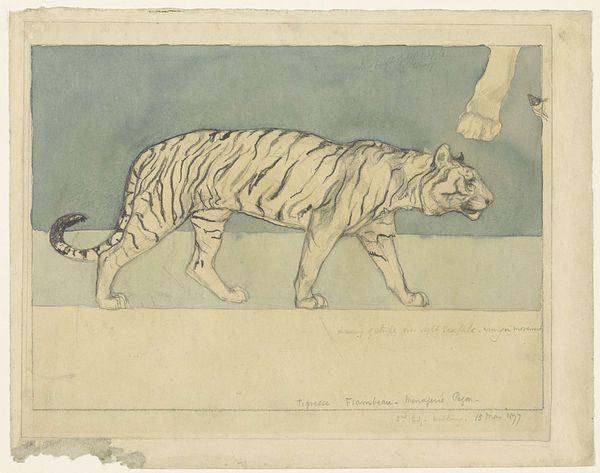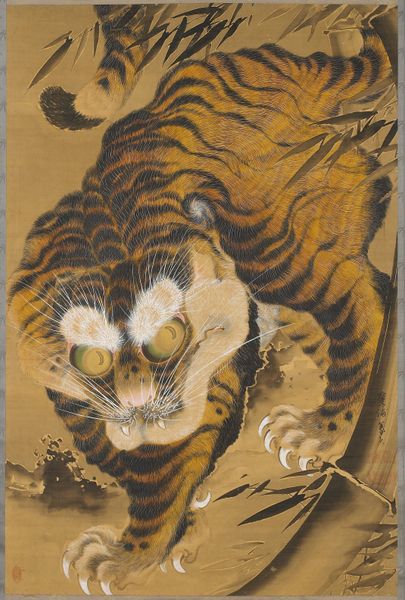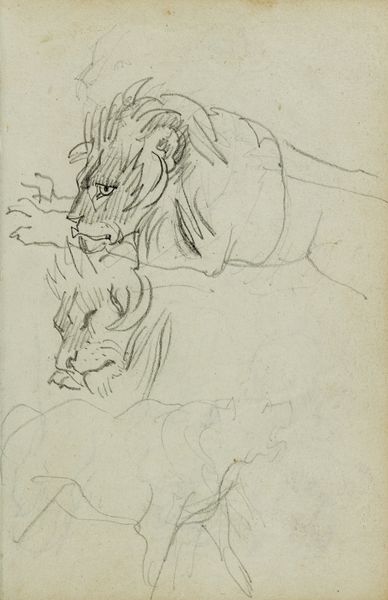
Dimensions: actual: 3.1 x 6.8 cm (1 1/4 x 2 11/16 in.)
Copyright: CC0 1.0
Curator: Rodolphe Bresdin's "Tiger," held at the Harvard Art Museums, presents a striking study in monochrome. The work's diminutive size, just over an inch tall, belies its intricate linework. Editor: There’s a compelling rawness to it. The tiger’s pose seems both relaxed and watchful, rendered with an almost frantic energy in the sketching. Curator: Indeed, the immediacy of the line is key. Bresdin, working in the 19th century, exploits the graphic potential of etching to create texture and form with minimal means. Consider the tension between the density of lines depicting the tiger's stripes and the relative openness of the surrounding space. Editor: It's interesting to consider how images of exotic animals like this tiger circulated and what they might have represented to European audiences. Was this a symbol of power, danger, or the sublime? Curator: A crucial point. The tiger becomes not just an animal, but an idea—a projection of colonial fantasies and anxieties. Editor: Ultimately, this tiny print invites us to consider the larger contexts of image-making and power. Curator: Yes, and the formal rigor by which Bresdin’s mark-making elevates the animal to something greater than its natural form.
Comments
No comments
Be the first to comment and join the conversation on the ultimate creative platform.
